Can You Upload Sound Of Bird And Have App Tell You What Bird Is Making That Sound
Try the BirdNET Sound ID App
AI-Powered Bird Sound Recognition
ID birds past audio. Assist science & conservation.


What is BirdNET?
How can computers learn to recognize birds from sounds? The Grand. Lisa Yang Centre for Conservation Bioacoustics at the Cornell Lab of Ornithology and the Chair of Media Informatics at Chemnitz Academy of Engineering are trying to discover an answer to this question. Our research is mainly focused on the detection and nomenclature of avian sounds using machine learning – nosotros want to assist experts and citizen scientist in their work of monitoring and protecting our birds. BirdNET is a research platform that aims at recognizing birds by sound at scale. We support various hardware and operating systems such equally Arduino microcontrollers, the Raspberry Pi, smartphones, spider web browsers, workstation PCs, and even cloud services. BirdNET is a citizen science platform as well as an analysis software for extremely large collections of audio. BirdNET aims to provide innovative tools for conservationists, biologists, and birders alike.
This folio features some of our public demonstrations, including a alive stream demo, a demo for the analysis of audio recordings, an Android and iOS app, and its visualization of submissions. All demos are based on an bogus neural network we call BirdNET. We are constantly improving the features and performance of our demos – delight brand sure to check back with us regularly.
BirdNET can currently place around 3,000 of the world'southward virtually mutual species. We volition add more than species in the near time to come.
Want to use BirdNET to analyze a big data collection? Become to our GitHub repository to download BirdNET.
Accept whatsoever questions? Delight allow us know (we speak English and German): ccb-birdnet@cornell.edu
Learn more than about BirdNET:
Have you ever heard a bird audio you couldn't ID? Larn how to apply our BirdNET smartphone app to identify your mystery birds on a trip through Sapsucker Woods!
Learn how to identify birds by sound with the Cornell Lab of Ornithology's gratis BirdNET mobile app and website. Advances in machine learning are making it easier to identify birds by their sounds. Q&A with BirdNET developer Stefan Kahl.
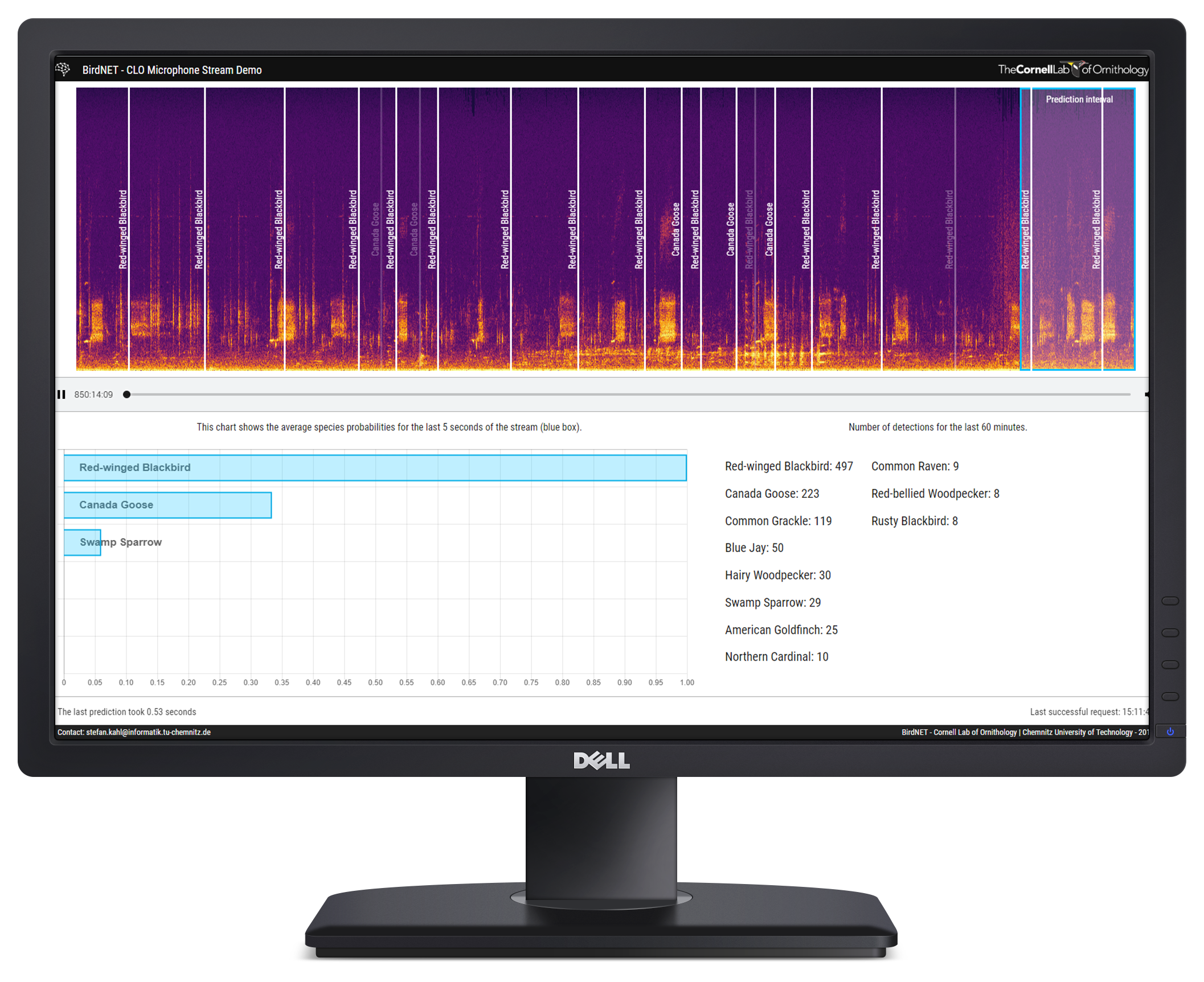
Alive Stream Demo
The live stream demo processes a live sound stream from a microphone outside the Cornell Lab of Ornithology, located in the Sapsucker Woods sanctuary in Ithaca, New York. This demo features an artificial neural network trained on the 180 virtually common species of the Sapsucker Wood expanse. Our system splits the audio stream into segments, converts those segments into spectrograms (visual representations of the audio indicate) and passes the spectrograms through a convolutional neural network, all in near-real-fourth dimension. The spider web folio accumulates the species probabilities of the last five seconds into one prediction. If the probability for one species reaches 15% or higher, you can see a marker indicating an estimated position of the corresponding sound in the scrolling spectrogram of the live stream. This demo is intended for large screens.
Follow this link to view the demo.
Analysis of Sound Recordings
Reliable identification of bird species in recorded audio files would be a transformative tool for researchers, conservation biologists, and birders. This demo provides a web interface for the upload and analysis of audio recordings. Based on an artificial neural network featuring almost 1,000 of the well-nigh common species of North America and Europe, this demo shows the most probable species for every 2nd of the recording. Please note: Nosotros need to transfer the sound recordings to our servers in society to process the files. This demo is intended for large screens.
Follow this link to view the demo.
Click here to download a demo recording.
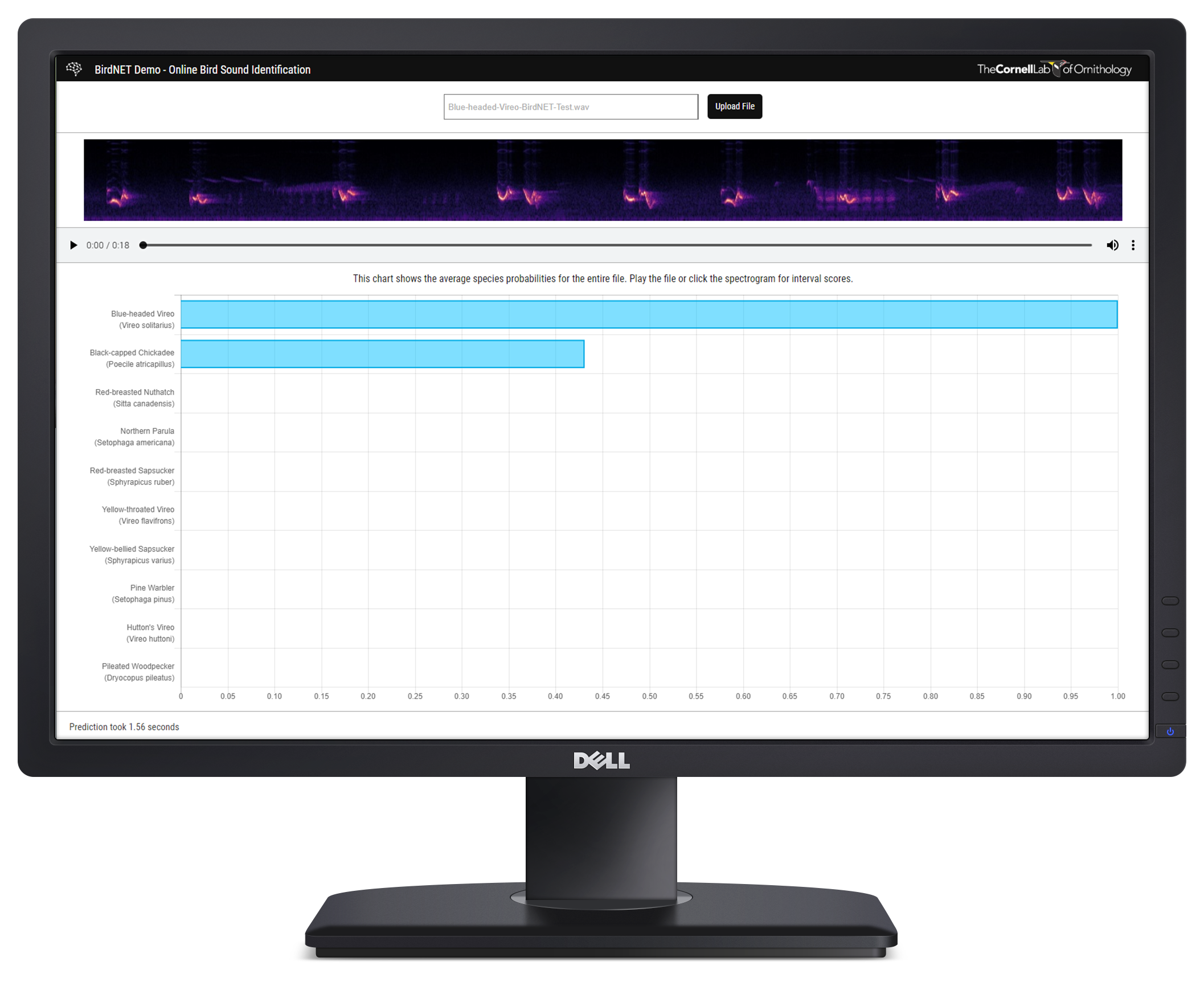
Notation: If you run into any instabilities or have any question regarding the functionality, delight let united states of america know. We will add new features in the near future, yous will receive all updates automatically.
About u.s.a.:

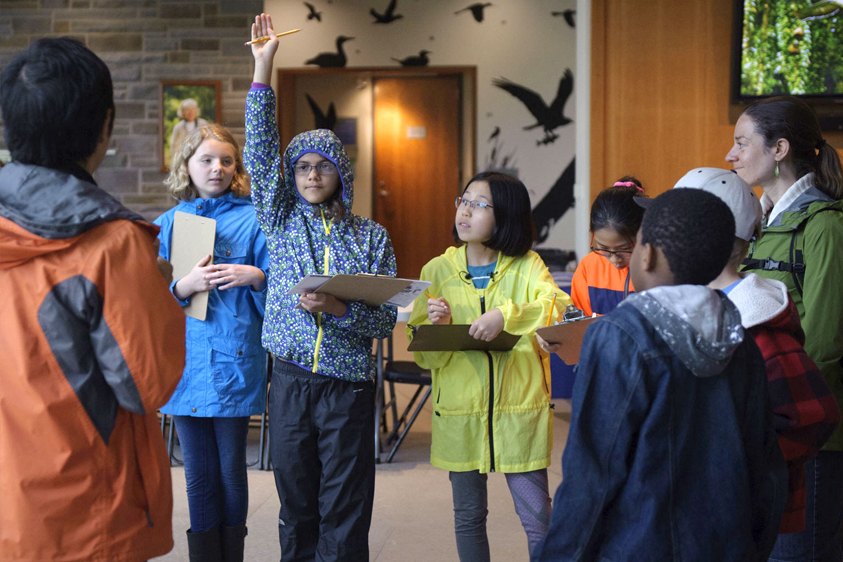
Cornell Lab of Ornithology
Defended to advancing the agreement and protection of the natural world, the Cornell Lab joins with people from all walks of life to make new scientific discoveries, share insights, and galvanize conservation activity. Our Johnson Center for Birds and Biodiversity in Ithaca, New York, is a global center for the written report and protection of birds and biodiversity, and the hub for millions of citizen-science observations pouring in from effectually the globe.
Click this link to visit our website.
One thousand. Lisa Yang Heart for Conservation Bioacoustics
Based at the Cornell Lab of Ornithology, the K. Lisa Yang Middle for Conservation Bioacoustics collects and interprets sounds in nature by developing and applying innovative conservation technologies across multiple ecological scales to inspire and inform conservation of wildlife and habitats. Our highly interdisciplinary team works with collaborators on terrestrial, aquatic, and marine bioacoustic research projects tackling conservation issues worldwide.
Click this link to visit our website.

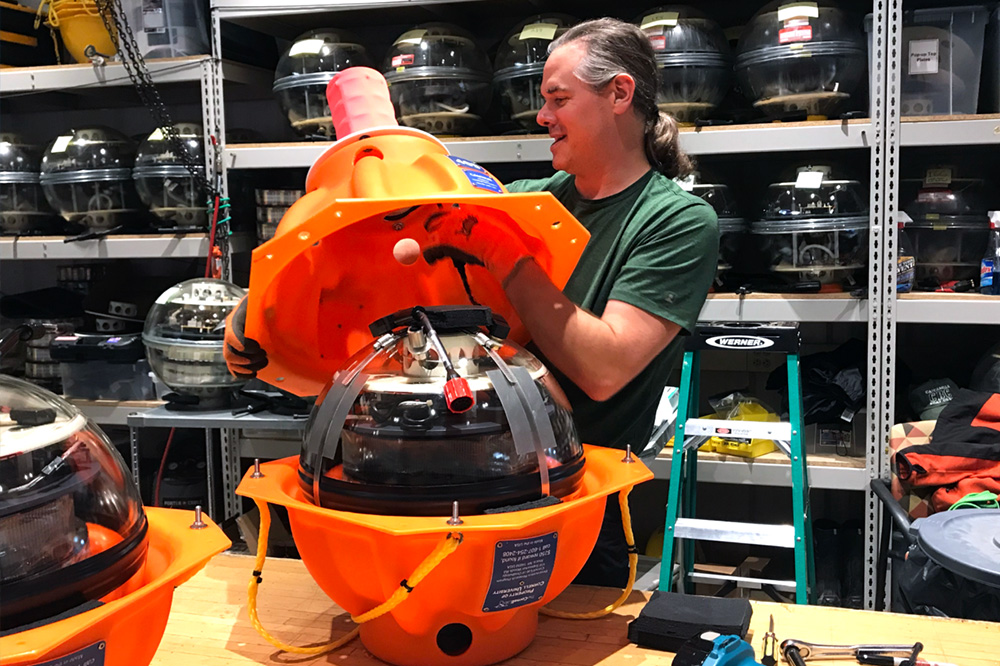


Chemnitz University of Technology
Chemnitz University of Technology is a public university in Chemnitz, Germany. With over 11,000 students, it is the third largest university in Saxony. It was founded in 1836 equally Königliche Gewerbeschule (Royal Mercantile College) and was elevated to a Technische Hochschule, a academy of engineering science, in 1963. With approximately 1,500 employees in science, engineering and direction, TU Chemnitz counts among the most important employers in the region.
Click this link to visit our website.
Chair of Media Computer science
The Chair of Media Information science at Chemnitz Academy of Technology has been working on content-based assay of large, heterogeneous information sets since 2007. In addition, the Chair of Media Informatics researches and teaches in the expanse of homo-computer interaction, with a special focus on critical and inclusive interaction design, equally well as novel (mobile) interaction modalities.
Click this link to visit our website.


Meet the squad:

Stefan Kahl
I am a postdoc within the K. Lisa Yang Center for Conservation Bioacoustics at the Cornell Lab of Ornithology and the Chemnitz University of Technology. My work includes the development of AI applications using convolutional neural networks for bioacoustics, environmental monitoring, and the design of mobile human-figurer interaction. I am the primary developer of BirdNET and our demonstrators.

Ashakur Rahaman
I am a research analyst within the K. Lisa Yang Center for Conservation Bioacoustics at the Cornell Lab of Ornithology and the community manager of the BirdNET app. I am actively involved in ecology conservation through scientific inquiries and public engagement. Understanding the relationship betwixt natural sounds and the effects of anthropogenic factors on the communication space of animals is my passion.

Connor Forest
My principal interest every bit a postdoc within the K. Lisa Yang Heart for Conservation Bioacoustics at the Cornell Lab of Ornithology is understanding how wildlife populations and ecological communities respond to environmental alter, and thus contributing to their conservation. I use sound data collected during large-calibration monitoring projects to written report N American bird communities.

Kristin Brunk
As a postdoc within the K. Lisa Yang Center for Conservation Bioacoustics, I am using bioacoustics information about bird communities in California's Sierra Nevada to model the occupancy of several focal bird species in response to habitat and fire conditions. These models and data will exist used by managers to inform conservation decisions into the future, especially in the face of an uncertain climate.
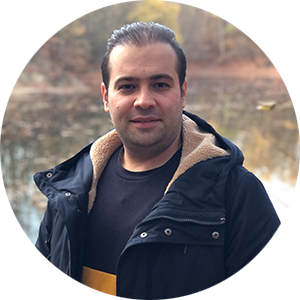
Amir Dadkhah
I am a software developer and figurer scientist at the Chair of Media Computer science at Chemnitz Academy of Technology with focus on applied computer science and human-centered design. I am the leading programmer of the iOS version of the BirdNET app.

Holger Klinck
I am the John West. Fitzpatrick Director of the K. Lisa Yang Centre for Conservation Bioacoustics at the Cornell Lab of Ornithology, Kinesthesia Fellow with the Atkinson Center for a Sustainable Futurity at Cornell University, and adjunct banana professor at Oregon State Academy. My current research focuses on the development and application of hardware and software tools for passive-audio-visual monitoring of terrestrial and marine ecosystems and biodiversity.
Support us:

Donate
BirdNET is a research project that relies on external funding. We want to develop new features, add more species, expand our services, and nigh importantly, provide a smashing experience for birders and those who desire to be one.
With your donation you tin can help us to accomplish these goals.
Every amount is valuable! It helps us embrace server costs and keep our research going.
Brand a donation

Collaborate
Are y'all currently researching a topic where BirdNET could be helpful, or do y'all have an idea for a enquiry project? Allow u.s.a. know! You would like to support us in the expanse of software and app evolution?
Please contact us.
We are open to your ideas and would love to talk with yous.
Send us an electronic mail: ccb-birdnet@cornell.edu
Related publications:
Wood, C. Thou., Kahl, S., Chaon, P., Peery, M. Z., & Klinck, H. (2021). Survey coverage, recording duration and community composition affect observed species richness in passive acoustic surveys.Methods in Ecology and Evolution. [PDF]
Kahl, Southward., Wood, C. M., Eibl, M., & Klinck, H. (2021). BirdNET: A deep learning solution for avian diversity monitoring.Ecological Information science,61, 101236. [Source]
Kahl, Due south., Denton, T., Klinck, H., Glotin, H., Goëau, H., Vellinga, W. P., … & Joly, A. (2021). Overview of BirdCLEF 2021: Bird phone call identification in soundscape recordings. In CLEF 2021 (Working Notes). [PDF]
Joly, A., Goëau, H., Kahl, S., Picek, L., Lorieul, T., Cole, E., … & Müller, H. (2021). Overview of LifeCLEF 2021: An evaluation of car-learning based species identification and species distribution prediction. In International Conference of the Cross-Language Evaluation Forum for European Languages (pp. 371-393). Springer, Cham. [PDF]
Kahl, S., Clapp, M., Hopping, W., Goëau, H., Glotin, H., Planqué, R., … & Joly, A. (2020). Overview of BirdCLEF 2020: Bird Sound Recognition in Complex Acoustic Environments. In CLEF 2020 (Working Notes). [PDF]
Joly, A., Goëau, H., Kahl, S., Deneu, B., Servajean, M., Cole, East., … & Lorieul, T. (2020). Overview of LifeCLEF 2020: A System-Oriented Evaluation of Automated Species Identification and Species Distribution Prediction. InInternational Conference of the Cross-Language Evaluation Forum for European Languages (pp. 342-363). Springer, Cham. [PDF]
Kahl, S. (2020). Identifying Birds by Sound: Big-scale Audio-visual Issue Recognition for Avian Activity Monitoring. Dissertation. Chemnitz University of Technology, Chemnitz, Germany. [PDF]
Kahl, South., Stöter, F. R., Goëau, H., Glotin, H., Planqué, R., Vellinga, W. P., & Joly, A. (2019). Overview of BirdCLEF 2019: Big-scale Bird Recognition in Soundscapes.
In CLEF 2019 (Working Notes). [PDF]
Joly, A., Goëau, H., Botella, C., Kahl, S., Servajean, M., Glotin, H., … & Müller, H. (2019). Overview of LifeCLEF 2019: Identification of Amazonian plants, South & Northward American birds, and niche prediction.
In International Conference of the Cantankerous-Linguistic communication Evaluation Forum for European Languages (pp. 387-401). Springer, Cham. [PDF]
Joly, A., Goëau, H., Botella, C., Kahl, Southward., Poupard, M., Servajean, Chiliad., … & Schlüter, J. (2019). LifeCLEF 2019: Biodiversity Identification and Prediction Challenges.
In European Briefing on Information Retrieval (pp. 275-282). Springer, Cham. [PDF]
Kahl, Southward., Wilhelm-Stein, T., Klinck, H., Kowerko, D., & Eibl, M. (2018). Recognizing Birds from Sound – The 2018 BirdCLEF Baseline Organization.
arXiv preprint arXiv:1804.07177. [PDF]
Goëau, H., Kahl, S., Glotin, H., Planqué, R., Vellinga, Due west. P., & Joly, A. (2018). Overview of BirdCLEF 2018: monospecies vs. soundscape bird identification.
InCLEF 2018 (Working Notes). [PDF]
Kahl, S., Wilhelm-Stein, T., Klinck, H., Kowerko, D., & Eibl, One thousand. (2018). A Baseline for Large-Calibration Bird Species Identification in Field Recordings.
InCLEF 2018 (Working Notes). [PDF]
Kahl, South., Wilhelm-Stein, T., Hussein, H., Klinck, H., Kowerko, D., Ritter, M., & Eibl, Grand. (2017). Large-Calibration Bird Sound Classification using Convolutional Neural Networks.
InCLEF 2018 (Working Notes). [PDF]
Source: https://birdnet.cornell.edu/
Posted by: deanlivalwas.blogspot.com

0 Response to "Can You Upload Sound Of Bird And Have App Tell You What Bird Is Making That Sound"
Post a Comment